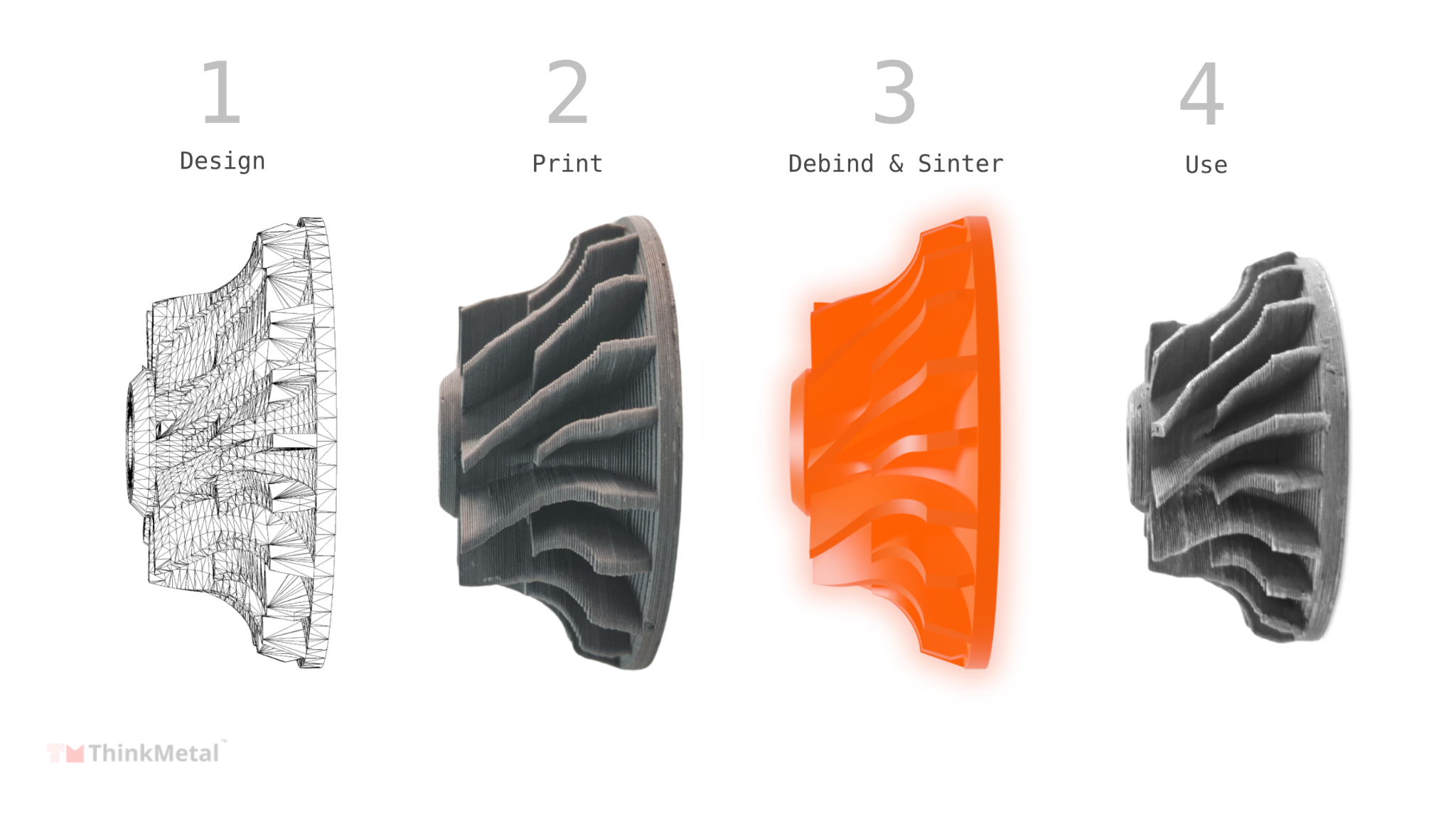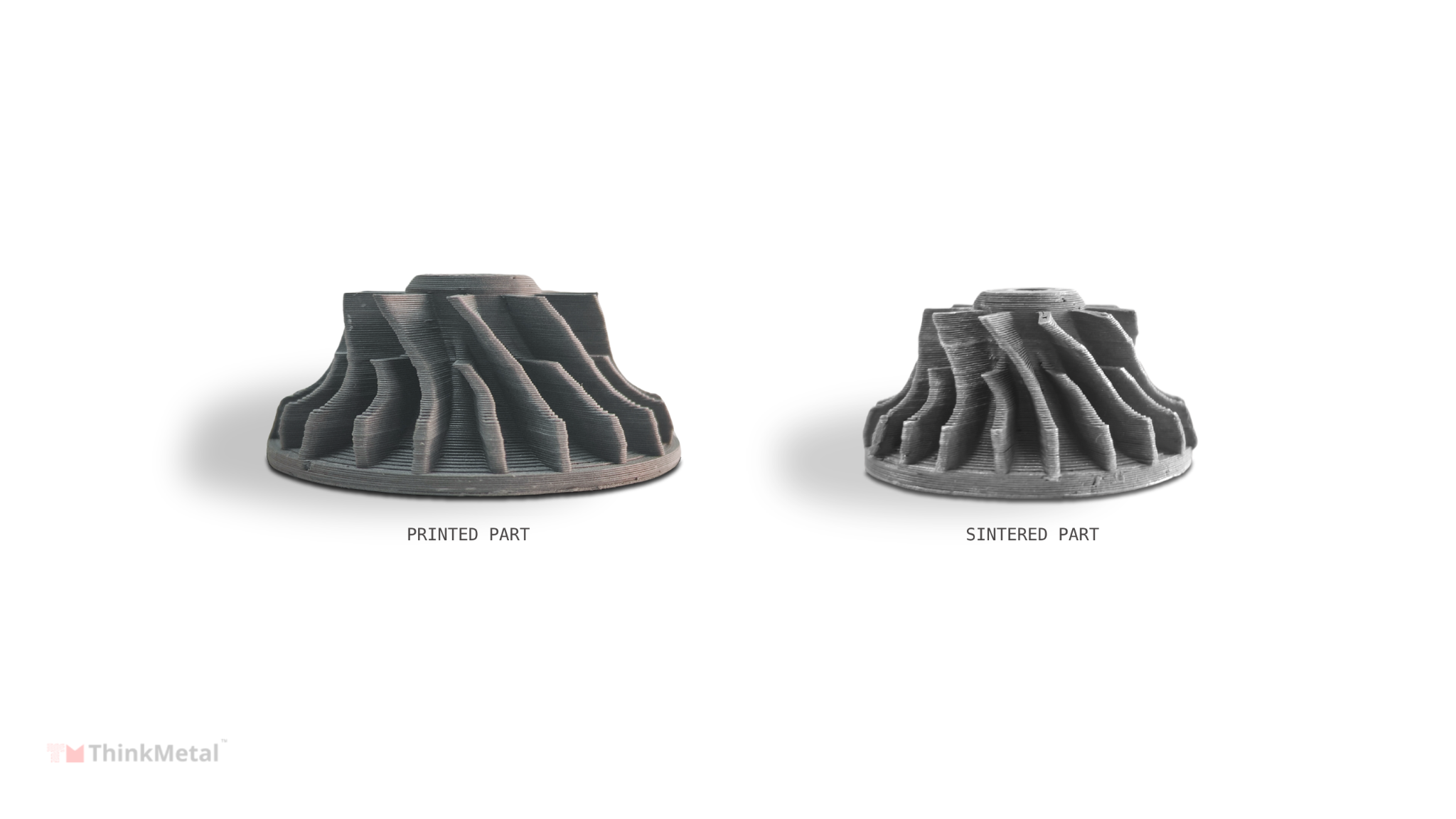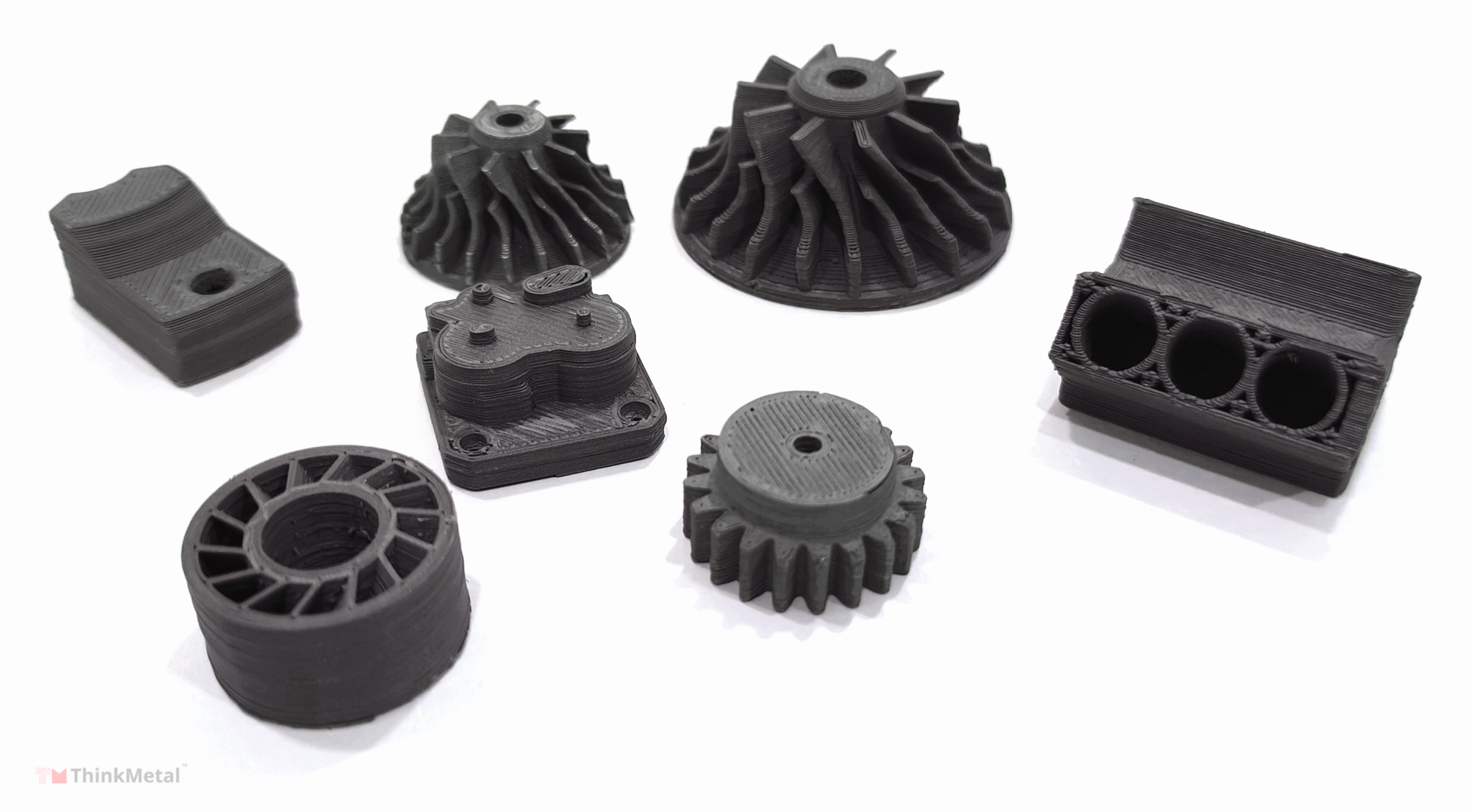Unlocking the Future of Manufacturing Metal Parts with ThinkMetal™
Published on: 2024-05-06
Unlocking the Future of Manufacturing Metal Parts with ThinkMetal™
Pioneering manufacturing metal parts with ThinkMetal™ using metal Fused Filament Fabrication (FFF) 3D printing. We are on a mission to provide quick & cost-effective solutions for complex metal parts. Our goal is to enable industries with unparalleled design freedom, efficiency, and safety.
Metal FFF 3D printing, also known as fused filament fabrication (FFF) is a process that uses binder materials mixed with metal particles, such as Stainless Steel, Copper, Inconel etc. The filament is fed, heated and extruded through a nozzle, and deposited layer by layer, to form an object. The part is then debound and sintered resulting in a dense and strong metal part.

ThinkMetal™ Fused Filament Fabrication metal 3D printing process
ThinkMetal™ Fused Filament Fabrication metal 3D printing process
Metal FFF 3D printing offers several advantages over traditional manufacturing methods. It's cost-effective & provides exceptional design freedom, allowing for complex geometries like hollow structures and lattice patterns. Additionally, it allows for batch printing of multiple parts, saving time and materials.
Metal 3D Printing Advantages
As the popularity of metal 3D printing grows by the day, there are several advantages companies are capitalising on. These are:
- Shorter Lead Times
- Freedom of Design
- Ability to Create Complex Parts
- Reduced Waste
- Good Mechanical Properties

Impeller 3D printed on ThinkMetal™ systems
Shorter Lead Times
Metal 3D printing significantly reduces lead times compared to traditional manufacturing methods. From design to production, a part can be conceived, uploaded, and printed within a matter of hours, ultimately slashing lead times. This not only expedites the delivery of parts to customers but also minimizes equipment downtime, resulting in overall cost savings.
Freedom of Design
Metal 3D printing offers unparalleled design freedom. With minimal design constraints, virtually any concept can be transformed into a physical part through a 3D CAD model. This extensive design flexibility facilitates opportunities for design optimization and swift tooling and prototyping, enabling companies to swiftly iterate on designs, print tools and prototypes, and assess their functionality.
Ability to Create Complex Parts
One of the primary benefits of metal 3D printing is its capability to produce parts with intricate geometries. Utilising a layer-by-layer approach, metal 3D printing can faithfully replicate almost any part envisioned in a 3D CAD drawing with exceptional detail.
Reduced Waste
In an era where sustainability is increasingly paramount, metal 3D printing stands out for its eco-friendly attributes. Unlike traditional manufacturing methods, metal 3D printing minimizes waste by utilizing only the necessary material for each part. Moreover, up to 97% of the non-sintered raw material, such as metal powder, can be recycled, underscoring the sustainability credentials of 3D printing technology.

Green parts 3D printed on ThinkMetal™ systems
Good Mechanical Properties
The mechanical characteristics of metal 3D printed parts largely depend on the additive manufacturing technology employed. Notably, Metal FFF can produce parts with near-isotropic mechanical and thermal properties. Metal FFF printed parts boast densities of up to 98.5%, surpassing those achieved through investment casting, and exhibit yield strengths nearly equivalent to machined parts.
In Conclusion
Metal 3D printing represents a paradigm shift in manufacturing, offering unparalleled capabilities in part creation, lead time reduction, design freedom, waste reduction, and good mechanical properties. While it may not completely replace traditional methods, it complements them, ensuring optimal manufacturing solutions tailored to specific job requirements.
Embrace the future of metal manufacturing with ThinkMetal™, where innovation meets excellence!